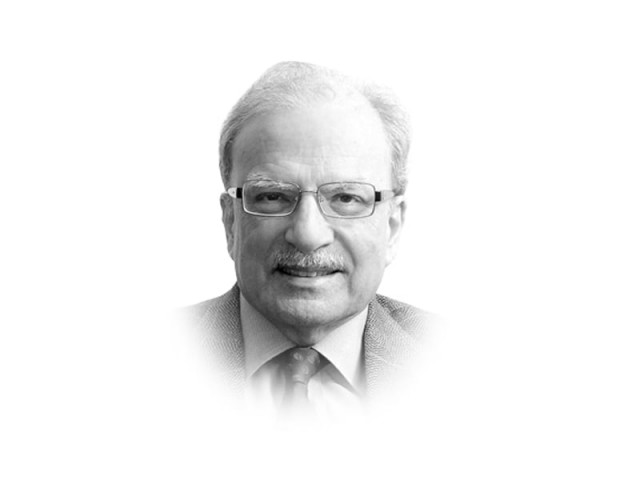The middle class debate
There is a debate both inside and outside Pakistan about the size of the middle class in the country.

Based on considerably more robust pieces of analyses carried out by several Indian scholars, it was determined that the Indian middle class accounted for some 40 per cent of that country’s population. This meant that some 500 million people in India could be said to belong to this economic and social class. While the Indian estimate generated considerable excitement among western businesses, my estimate for Pakistan provoked some controversy. At a conference held in Belagio, Italy, some participants from the US doubted my numbers, suggesting that it was a very high estimate. Why this questioning when a much larger one for India was readily accepted?
The answer is simple. There is a group of scholars in the US who believe that the endgame has been reached for Pakistan as we (and they) know the country today. They believe that Pakistan is now ripe for takeover by Islamic radicals. Once they have succeeded in overthrowing the current political and social order, they will go on to establish a regime not too different from the one that has been governing for the last several decades. Such a regime, like the one in Tehran, will be hostile towards the West, in particular towards the US. It will also be much more dangerous being in possession of a large nuclear arsenal — now believed to be the fourth largest in the world — a radical Islamic Pakistan would pose a serious threat to the US, and by implication, to the state of Israel. The West should, therefore, be prepared to take action to prevent such an unpleasant outcome. It was, however, not specified exactly what action should be taken.
The middle class estimate, such as the one I had offered, countered this line of thinking. It was recognised that the middle classes normally are more inclined towards modernity than other classes. In this context it is worth quoting from Francis Fukuyama’s recent article in Foreign Affairs. He writes: “It is most broadly accepted in countries that have reached a level of material prosperity sufficient to allow a majority of their citizens to think of themselves as middle-class, which is why there tends to be a correlation between high levels of development and stable democracy”. He accepts the fact that there can be deviations from this path, as has been the case in Iran and Saudi Arabia, but that is explained by their enormous oil wealth which they can use to obtain the loyalty of the middle class. The Arab Spring has shown — he maintains — that the middle class can be mobilised against any kind of dictatorship including the theocratic ones to which the followers of radical Islam aspire. What stands in the way of the nightmare seen in Pakistan by some American scholars is the middle class. If it is large enough, their fear is unfounded and no action is needed. The academics advocating that the West should be prepared, don’t like this conclusion to be reached since it is likely to breed complacency amongst policymakers.
More serious work has been done on the size of the middle class in Pakistan since I wrote my article. In a recent contribution by the economist Sakib Sherani to Dawn titled “Consumption conundrum” (March 23), he presents a much higher estimate than I had provided, both in terms of the size of the middle class in Pakistan and its proportion in the total population. “I updated the figure arrived at earlier, making one crucial adjustment: for the estimated size of Pakistan’s undocumented (or ‘black’ economy). The adjusted figure for the middle class is a staggering 70 million people, or 40 per cent of the population”, he writes. This brings the Pakistani situation closer to the one that is generally accepted for India.
A large Pakistani middle class will keep Pakistan moving on a relatively liberal path in terms of its economic and political development. This class is also influenced by the members of the large Pakistani and Muslim diasporas, particularly in the US. The Pakistani middle class is well-represented in the various diasporas dispersed across the globe. Notwithstanding the European and American fears about the penetration of radical Islam into these communities, large segments of these populations have picked up the liberal economic, political and social values of their host populations. This makes the diasporas more modern and secular than the native populations from which they are drawn. With the development of communication technologies in recent years, the Muslim communities in the West are not only in touch with their homelands, they are also influencing the populations from which they come from.
We know from the several case studies that have been carried out to understand the dynamics of the Arab Spring, that the diasporas had a deep influence on the events leading up to the uprisings in the streets and the public squares. Prominent members of the diasporas are now prominently engaged in the political restructuring of countries such as Egypt, Libya, and Tunisia. In Pakistan, Imran Khan’s rise has the support and financial backing of the Pakistani diasporas in Britain, the Middle East and North America. I think it is safe to assume that Pakistan’s development will be deeply influenced by its middle class, which is not likely to adopt the radicalism on offer by various groups such as al Qaeda and the Taliban.
Published in The Express Tribune, April 2nd, 2012.














COMMENTS
Comments are moderated and generally will be posted if they are on-topic and not abusive.
For more information, please see our Comments FAQ